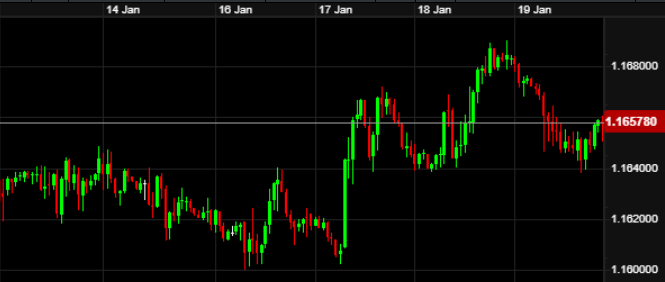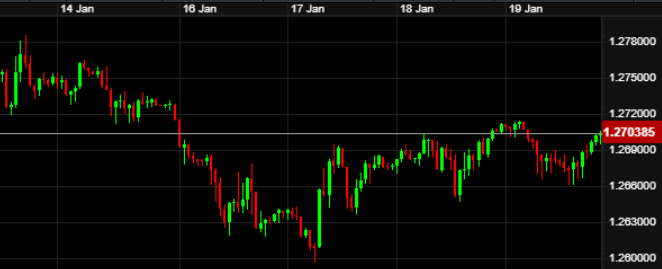ACM Update 22-01-24

UK inflation bounces back up, average earnings grow by less than forecast and a rainy December proved a very tough month for retail sales. Not an ideal mix for a UK economy desperately trying to ward off a technical recession in the next round of GDP figures.
Many politicians, central bankers and world leaders meanwhile spent their week in Davos at the World Economic Forum. This week sees the start of 2024’s interest rate announcements, with the European Central Bank taking to the stage on Thursday lunchtime.
UK data continues to disappoint. With recent GDP numbers proving the UK economy is indeed teetering on the brink of a mild recession to end 2023, the latest data releases didn’t provide much reason for optimism. We started on Tuesday with unemployment data, which didn’t paint the prettiest of pictures from the outset. Whilst overall unemployment remains flat at 4.2% and the number of those claiming benefits grew by less than forecast, spending power remains a concern.
The key metric for this is average earnings, which came in short of expectations at 6.5% (vs 6.8% expected). This was also down from 7.2% the previous month. December’s CPI inflation figure was released on Wednesday at 4.0%, up from 3.9% last month and contrary to the expected 3.8%. This was the first rise in the metric in almost a year and was mainly driven by rises in alcohol & tobacco duty, introduced recently by Jeremy Hunt.
The shift does mirror that in the United States and Eurozone in December, albeit these were primarily driven by fuel price changes. Core inflation meanwhile remained the same which can at least be viewed as a positive. Overall though, with inflation ticking up and spending power reducing, it seems almost a certainty that the Bank of England wont look to cut interest rates in ten days time.
High street spending was forecast to be fairly dire in December, and that did indeed prove to be correct when the retail sales figures were released. These showed a monthly drop of -3.2%, thus recording the biggest monthly drop since the latter round of COVID restrictions in January 2021. Two theories were offered as to the fall. The first being people shopped earlier for Christmas in November due to Black Friday sales. The second being the dire December weather prevented people from getting out and about. In reality, a combination of the two is a feasible cause.
All in all, another relatively flat week for sterling. Whist some of the UK data was incredibly poor, the knock-on effect is that the Bank of England will (highly likely) be holding fire on any rate cuts on 1st February. This is actually supporting GBP for now, and saw us remain in a similar range as to the first two weeks of the year.
Rates did nudge up a fraction versus the Euro to their highest since mid-December, but still remain in the 1.15 to 1.17 channel. Recent moves on GBP-EUR can be seen in the chart below:

Over to the Eurozone next and to what has been a very mixed picture from different corners of the ECB committee. Christine Lagarde made the trip to the World Economic Forum in Davos where she spoke openly about the future path of ECB interest rates. The President suggested to Bloomberg TV that the bank may well be in a position to look at “summer rate cuts”, however the policy committee will remain “data focussed”. She maintains that it is too early to declare victory versus inflation.
It is important to remember though that the policy committee is exactly that, a committee. Other decision-making members were speaking last week and provided a mixed picture, but generally followed the same mantra as Lagarde.
Bundesbank President, Joachim Nagel, became the latest in a growing group of ECB members “open to interest rate cuts in the summer". Fellow member Robert Holzmann however, said in his own speech last week that such a move is by no means guaranteed given the geopolotical climate, and how this may directly impact inflation.
The Bank of Lithuania’s ECB panellist, Gediminas Simkus, believes that investors are already too hopeful when it comes to short term interest rate cuts on the continent. All of the above seem to point to this Thursday’s ECB meeting showing no change in policy, but it will be interesting to see comments from Lagarde nonetheless.
In a quieter week for EU data, the Final CPI inflation figure for 2023 recorded 2.9%. This remains the lowest of the big three, with 2023 closing out at 4.0% in the UK as mentioned above, and 3.4% in the US, as covered last week.
The German economy seems to be improving somewhat, with the latest ZEW Economic Sentiment figure recording a positive number, thus optimism. This beat the forecast by a fair distance and was the best figure since February 2023.
Over to the US, and it was a quiet start to the week with the Martin Luther King public holiday on Monday. At the risk of sounding like a broken record, beyond that it was over to the US Congress and their ongoing fight to raise the debt ceiling and avoid a partial government shutdown.
Once again, a fast approaching deadline forced both parties to come to an agreement, despite political tensions. A looming snowstorm headed for Washington DC also seemed to speed up proceedings. Always helps! The can is now kicked down the road until early March, so expect another sentence or two from me on the matter then.
In terms of data releases from the US last week, retail sales continue to stride along nicely. The metric recorded a 0.6% month on month growth for December. Very good news when directly compared to the equivalent UK number. The US jobs market remains buoyant too, with Weekly Unemployment Claims recording their lowest figure since February 2023.
The Federal Reserve’s Beige Book was also released on Wednesday night. This publicises the range of data that policy members have access to in advance of their next meeting (exactly two weeks after the Beige Book). It showed little to no change in economic activity, but a slight slowdown in the jobs market.
All in all the, Dollar remains resilient and remained in an almost 1% range versus GBP during the week. Please see the chart below:

The week ahead:
Tuesday – Bank of Japan rate announcement (03:00 UK time),
Wednesday – FRA/GER/EU/UK/US Manufacturing & Services data (08:15-14:45), Bank of Canada rate announcement (14:45) & Press Conference (15:30)
Thursday – Australian Bank Holiday, ECB Rate Announcement (13:15), US Advance GDP (13:30), ECB Press Conference (13:45)
Friday – Core PCE Price Index (13:30)
Apart from three major central bank meetings, somewhat of a lighter week of data releases. The Bank of Japan, Bank of Canada and European Central Bank all take to the stage for their latest policy meetings.
Of the three, Christine Lagarde and her colleagues will arguably be the main focal point, as the first meeting of the “big three” in 2024. We expect no change in policy, however further commentary about summer rate cuts may fuel markets, who seem to already be well ahead of themselves in terms of expectations for a cut soon.
The main US release will be advance GDP on Thursday lunchtime, sandwiched in between the two ECB events. US growth remains strong, and any slowdown in this could well drive the Fed towards a rate cut of their own sooner rather than later.
The Dollar does seem to be slightly on the back foot still, so there is certainly potential for GBP-USD to head further north in the coming weeks if current data persists. For any pending requirements, be sure to respond to this email and we will be in touch.
Have a great week.